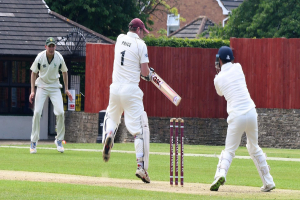
Sunday Snippets: When the tail wags
 By Venkatesh Raghavan
By Venkatesh Raghavan

When the tail wags, cricket becomes exciting. Tailender Jasprit Bumrah’s recent feat in the ongoing fifth cricket test match with England on their soil is unparalleled in the sense that it’s rare to see such a feat being performed by a non-specialist batsman, that too against a pace bowler taking his full run-up. Bumrah succeeded in scoring 35 runs off an over at a stage when India had already lost nine wickets. In addition to serving as a milestone, it also helped the Indian team cross the 400-run mark.


Looking back, when trying to access feats performed by our tail-enders, a tenth wicket partnership between GR Vishwanath (GRV) and Bhagwat Chandrashekar, who holds the unenviable record for the maximum number of ducks in Test cricket, saved India in its first innings at Chepauk against the touring West Indies. Chandrashekar had managed to score 20 runs on this occasion and GRV missed his century by a few runs after the Indian tail was made to stop wagging. India just managed to salvage a humiliating collapse and ended their first innings with 192 runs.

Much later, Bishen Singh Bedi who though much better than Chandra with the willow managed to score his first and only Test 50 against New Zealand on a dead Kanpur track on home soil. Off-spinner, Srinivas Venkatraghavan, captaining the Indian side against New Zealand too contributed delightfully with the bat to take the Indian total to a moderately respective 297 in their first innings.
However, after the halcyon days of our spin trio came to an end, the Indian tail exhibited robust batting skills and could not be taken lightly by any touring or home side that we played against. Bowlers like Roger Binny or Shiv Lal Yadav proved to be much more productive than the runs yielded by the Indian tail during the era of the spinning trio.
Coming to tail-wagging feats by other teams, the earliest instance that comes to mind was during the first World Cup semi-finals between West Indies and Pakistan on English soil in 1975. West Indies was nine down for 207 at one stage and they had to cross the 250 mark to win the match. It was a miracle how the tenth-wicket partnership not only lasted but took them past the finishing mark to set up a clash with the formidable Australian side in the World Cup finals.
In the mid-eighties, there was also a feat performed by all-rounder Ian Botham in the Ashes series against Australia when the English side was seven down in their second innings and trailed by more than 300 runs. Ian Botham managed three productive partnerships that took the English side not only past the deficit mark but also gained a slender lead of 100 plus runs. When Australia went in to bat for their second knock, they were bundled out despite only having to score a paltry hundred and odd runs for a victory.
Coming back to the tail-end exploits of the Indian team, it might be recalled that in the 2001 home series India played against Australia, we were eight wickets down and had 20 and odd runs to score for registering a win. I remember this moment because our resident editor Sujoy Gupta in Asian Age grew so tense that he chose to switch off the television. We coerced him into switching it on again and we got to witness Harbajan Singh scoring the winning runs after surviving tense moments at the crease.





